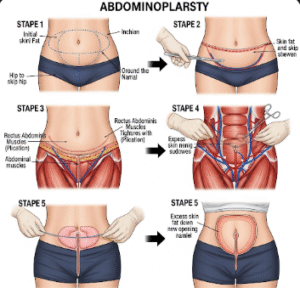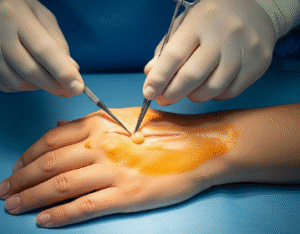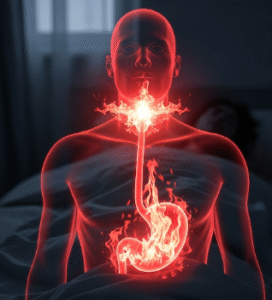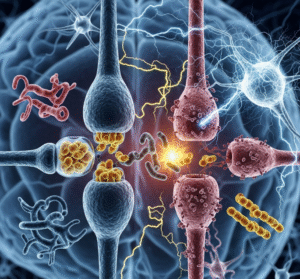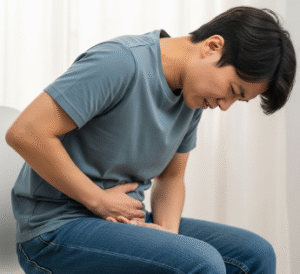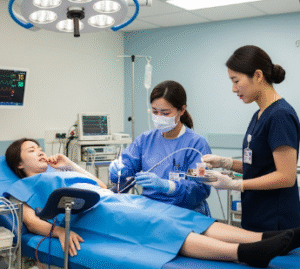Overview
Lower abdominal pain refers to discomfort or aching in the area below the belly button, including the pelvic region. It is a common symptom experienced by individuals of all ages and can range from mild and intermittent to severe and persistent.
In Korea, hospitals and clinics provide comprehensive evaluation for lower abdominal pain, using laboratory tests, imaging studies (ultrasound, CT, MRI), and specialist consultations to identify the underlying cause. Proper diagnosis is essential because lower abdominal pain can stem from gastrointestinal, urinary, reproductive, or musculoskeletal issues, some of which may require urgent intervention.
Key Facts
- ➔ Lower abdominal pain can be acute (sudden) or chronic (persistent).
- ➔ It may affect one side, both sides, or the entire lower abdomen.
- ➔ Causes can range from minor digestive issues to serious medical emergencies.
- ➔ Common associated symptoms include nausea, vomiting, bloating, fever, urinary changes, or menstrual irregularities.
- ➔ Early evaluation is crucial to diagnose conditions accurately and prevent complications.
What is Lower Abdominal Pain?
Lower abdominal pain is a general term describing discomfort in the area below the navel.
- ➔ Pain characteristics: It can be sharp, dull, crampy, stabbing, or constant.
- ➔ Clinical significance: While mild pain is often benign, severe or persistent pain may indicate infection, inflammation, obstruction, or organ dysfunction.
- ➔ Location matters: Pain on the left, right, or midline may help clinicians narrow down the cause.
- ➔ Impact on daily life: Persistent pain can interfere with work, sleep, and physical activity, affecting overall well-being.
What Symptoms Are Related To
Lower abdominal pain may present with various accompanying symptoms depending on the underlying cause:
- ➔ Digestive issues: Bloating, diarrhea, constipation, nausea, or vomiting
- ➔ Urinary problems: Frequent urination, burning sensation, or blood in urine
- ➔ Reproductive system issues: Irregular menstruation, pelvic pressure, or vaginal discharge
- ➔ Systemic symptoms: Fever, chills, or fatigue indicating infection or inflammation
- ➔ Musculoskeletal symptoms: Lower back pain or discomfort when moving or standing
Recognizing associated symptoms helps guide investigations and treatment strategies.
What Causes / Possible Causes
Lower abdominal pain can arise from multiple organ systems:
- ➔ Gastrointestinal causes: Irritable bowel syndrome (IBS), constipation, gastroenteritis, appendicitis, or diverticulitis
- ➔ Urinary causes: Urinary tract infection (UTI), kidney stones, or bladder inflammation
- ➔ Reproductive causes (in women): Menstrual cramps, ovarian cysts, endometriosis, pelvic inflammatory disease, or ectopic pregnancy
- ➔ Reproductive causes (in men): Prostatitis, testicular torsion, or hernia-related pain
- ➔ Musculoskeletal causes: Strain of abdominal muscles or lower back issues radiating to the abdomen
- ➔ Vascular causes: Abdominal aortic aneurysm (rare but serious)
Correctly identifying the underlying cause is crucial to prevent complications and ensure effective treatment.
When Should I See My Doctor
Seek medical attention promptly if lower abdominal pain is:
- ➔ Severe or worsening rapidly
- ➔ Accompanied by fever, chills, or vomiting
- ➔ Associated with blood in stool or urine, or unexplained vaginal bleeding
- ➔ Occurring alongside dizziness, fainting, or severe tenderness
- ➔ Persistent for more than a few days without improvement
Early evaluation helps detect urgent conditions such as appendicitis, ectopic pregnancy, or infections.
Care and Treatment
Treatment for lower abdominal pain depends on the underlying cause:
- ➔ Gastrointestinal causes: Dietary changes, hydration, medications for constipation, diarrhea, or infection
- ➔ Urinary causes: Antibiotics for UTI, pain relief for kidney stones, and adequate fluid intake
- ➔ Reproductive causes (women): Pain relief, hormonal therapy, or surgical interventions for cysts or endometriosis
- ➔ Reproductive causes (men): Antibiotics, supportive care, or surgical intervention for conditions like hernia or torsion
- ➔ Musculoskeletal causes: Physical therapy, rest, and pain relief medications
- ➔ Lifestyle modifications: Balanced diet, regular exercise, stress management, and adequate hydration
In many cases, symptomatic care combined with treatment of the underlying cause leads to significant improvement.
Treatment Options in Korea
Korean hospitals provide comprehensive evaluation and management for lower abdominal pain:
- ➔ Diagnostic tests: Blood tests, urinalysis, abdominal ultrasound, CT scan, or MRI to identify the cause
- ➔ Specialist consultations: Gastroenterologists, urologists, gynecologists, and general surgeons
- ➔ Medical therapy: Antibiotics, anti-inflammatory drugs, or hormonal therapy depending on the diagnosis
- ➔ Surgical intervention: Appendectomy, cyst removal, hernia repair, or treatment for ectopic pregnancy when needed
- ➔ Pain management: Analgesics, lifestyle guidance, and supportive care for chronic or recurrent pain
- ➔ Multidisciplinary approach: Collaboration between specialists ensures accurate diagnosis and personalized treatment
Leading hospitals such as Seoul National University Hospital, Asan Medical Center, and Samsung Medical Center offer state-of-the-art diagnostics and comprehensive care for patients with lower abdominal pain, ensuring timely intervention and symptom relief.
In Summary: Lower abdominal pain is a common but complex symptom with many possible causes, ranging from mild digestive issues to serious medical emergencies. Timely evaluation and treatment in Korea can relieve pain, treat underlying conditions, and prevent complications.
- ➔ Key Takeaway: Persistent or severe lower abdominal pain should never be ignored, as early diagnosis is essential.
- ➔ Action Point: Seek medical evaluation to identify the cause, receive appropriate treatment, and restore quality of life.


